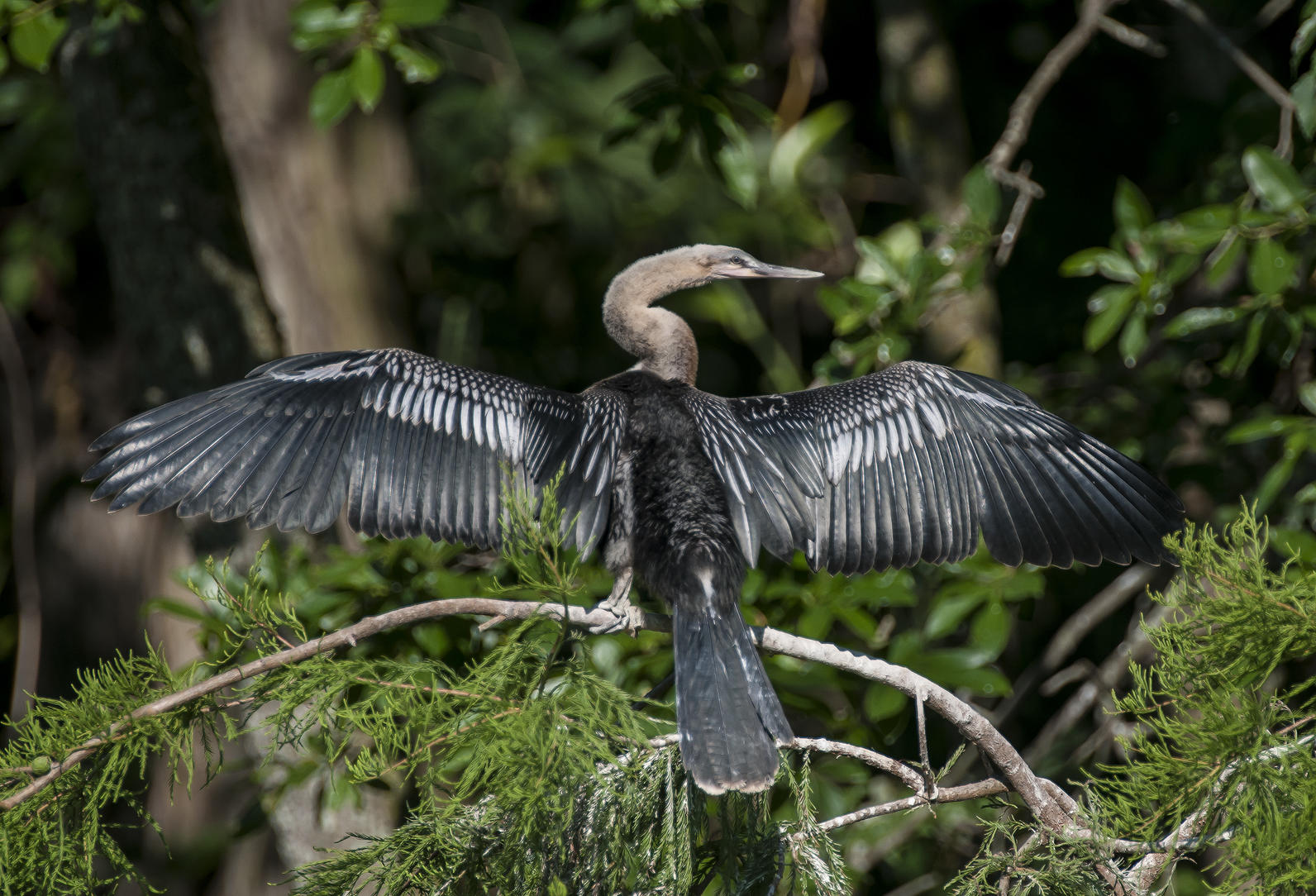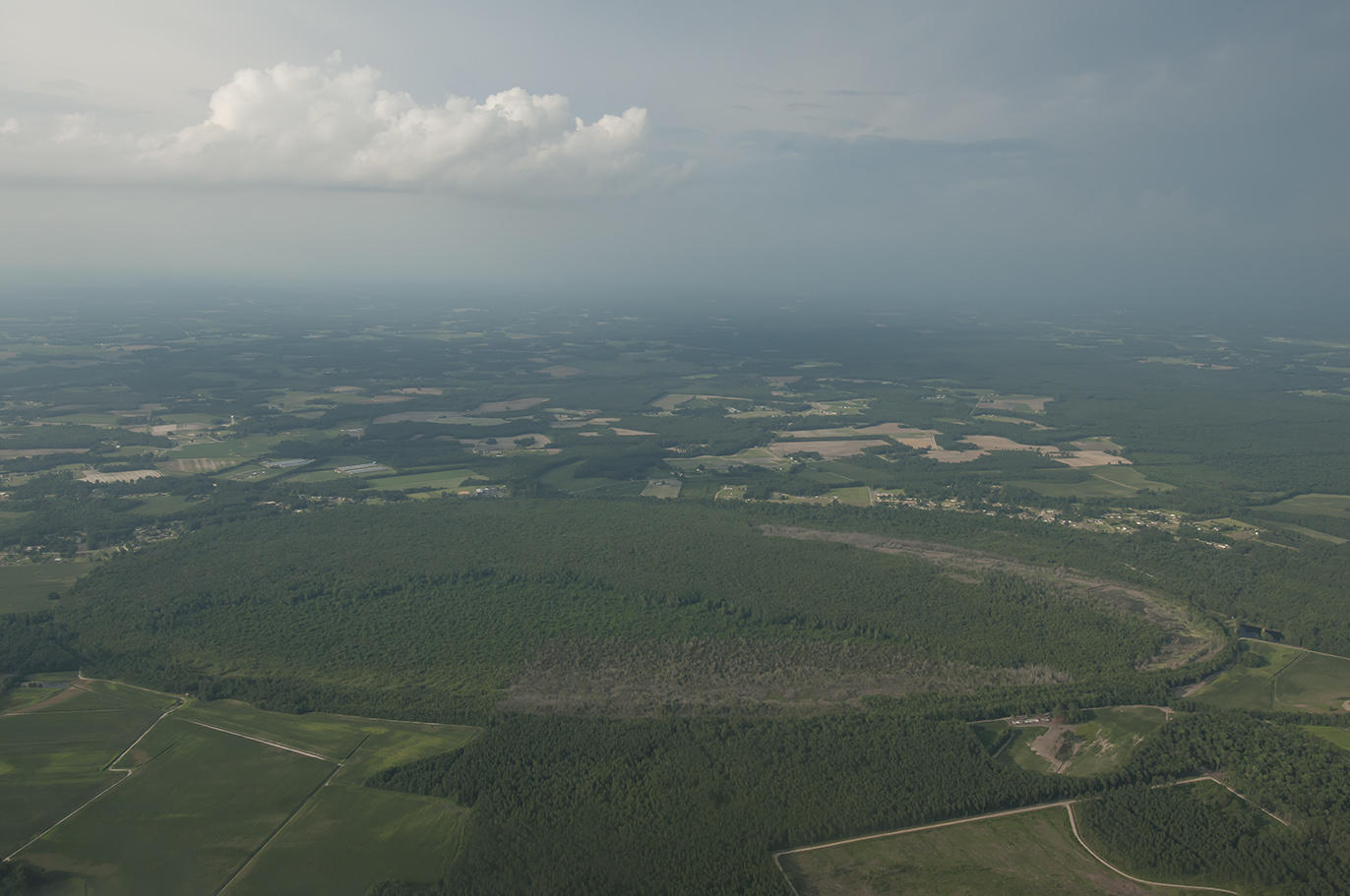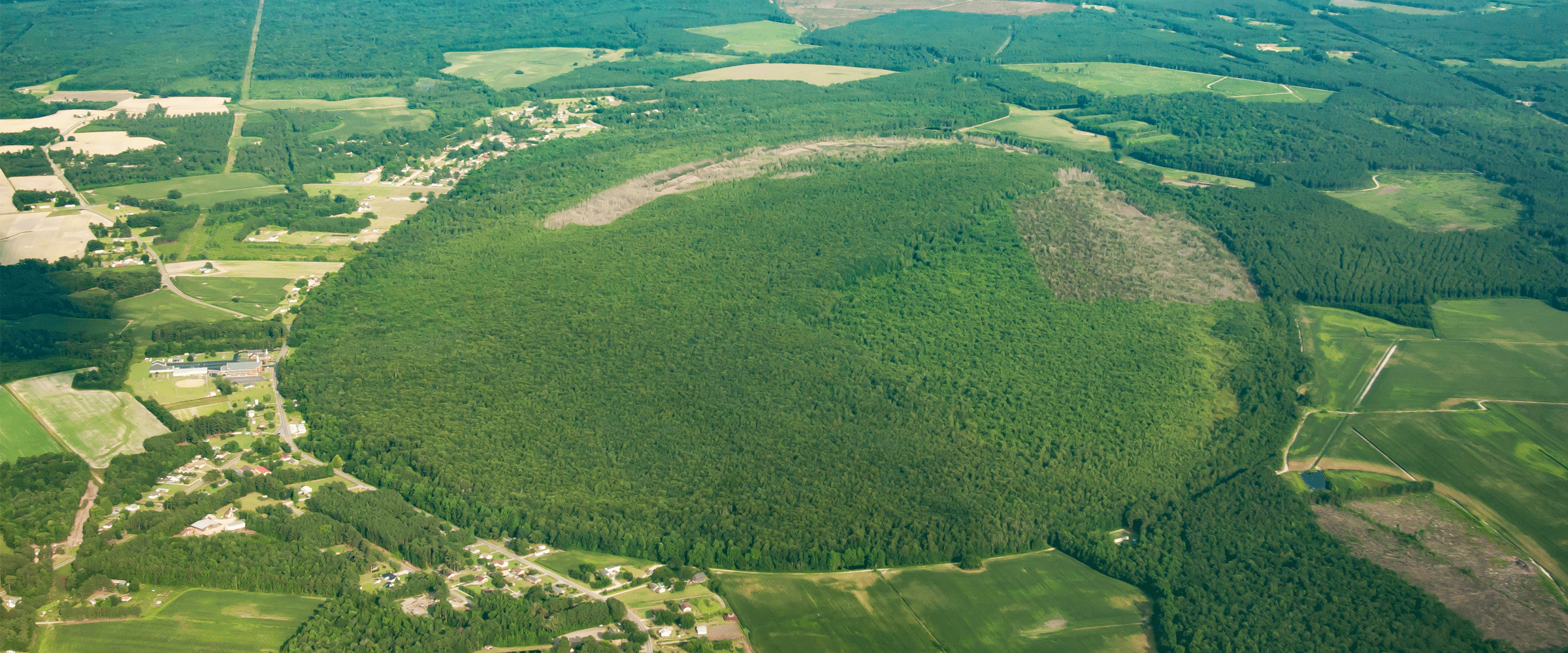Leading North Carolina conservation nonprofit and wildlife organizations have successfully acquired nearly all of Warwick Mill Bay to permanently protect one of the state’s few remaining large, intact, and relatively undisturbed Carolina Bays.
Audubon North Carolina, North Carolina State Parks, and The Conservation Fund have successfully acquired 977 acres of Warwick Mill Bay near Lumberton, N.C. for wildlife preservation.
“The size and diversity of Warwick Mill Bay makes it important alone,” said Walker Golder, Director Atlantic Flyway Coast Initiative for the National Audubon Society. “Warwick Mill Bay is one of North Carolina’s great natural treasures. Many of the Carolina Bays in North and South Carolina have been drained, filled, logged, or converted to other uses. Few large Carolina Bays remain in a relatively undisturbed state. Protecting this large Carolina Bay will preserve this unique natural feature along with the wetlands, many species of birds, and other wildlife that occur in the bay.”
The Conservation Fund recently purchased the property in the Lumber River Basin and will transfer it to the Division of Parks and Recreation for possible designation as a State Natural Area once a state-side grant from the federal Land and Water Conservation Fund is available. Significant funding for the $1.3 million acquisition has been provided by the North Carolina Environmental Enhancement Grants Program (EEG), NC Cleanwater Management Trust Fund, and generous private support from Fred and Alice Stanback.
Audubon NC plans to work closely with North Carolina State Parks to develop a long-term conservation and management plan for the property to preserve its natural, ecological, water quality and cultural values.
“An important part of the mission of North Carolina State Parks is to help protect the state’s biological diversity and natural heritage,” said Carol Tingley, State Parks Deputy Director. “We are happy to work with Audubon NC and The Conservation Fund to protect such an extraordinarily beautiful and significant site. The Division of Parks and Recreation will explore the possibility of including Warwick Mill Bay in the state parks system.”
Warwick Mill Bay is critical to wildlife conservation as it is the headwaters of Peters Branch. With thoughtful land conservation, the organizations will be able to protect water quality in the Lumber River basin and impact wildlife for decades to come.
“A recent survey of wading birds revealed this land is far more important for bird conservation than we thought,” said Curtis Smalling, Director of Conservation for Audubon North Carolina. “An overflight of the property by NC Wildlife Resources Commission revealed an estimated 250 breeding pairs of federally-threatened Wood Storks, making it one of the largest Wood Stork colonies in North Carolina and one of the most significant in the southeastern US. Protecting this land will go a long way in helping preserve this species.”
“The Warwick Mill Bay has been a conservation priority for the State for the last three years because of the high quality breeding habitat it provides, and we are honored to help facilitate its purchase to meet the needs and the goals of the NC State Parks and Audubon NC,” said Bill Holman, The Conservation Fund’s North Carolina State Director. “We thank North Carolina’s U.S. delegation–U.S. Senator Richard Burr, U.S. Senator Thom Tillis and U.S. Representative Richard Hudson—for their leadership and support of the Land and Water Conservation Fund, which is so critical to conservation efforts like this across North Carolina.”
LOCATION
Warwick Mill Bay is located southeast of Lumberton, in Robeson County, N.C. The 977 acres of the Carolina Bay includes the majority of the bay, which is the headwaters of Peters Branch and leads to the Lumber River.
The site has significant surface water and wetlands. The water and wetlands of Warwick Mill Bay comprise the headwaters of Peters Branch. Peters Branch flows to Big Swamp, which then flows to the Lumber River. Warwick Mill Bay contributes significantly to the conservation of wetlands and water in the Lumber River basin.

WILDLIFE BOUNTY
Preserving this land is an opportunity for wildlife to rebound and thrive:
- The North Carolina Natural Heritage Program lists Warwick Mill Bay as “State Significant” based on its large size and undisturbed character, the large heron colony, and other breeding birds that are present at the site, as well as the presence of two extensive natural communities (Nonriverine Swamp Forest, Pond Pine Woodland) as well as Dry-Mesic Oak-Hickory Forest and Semipermanent Impoundment.
- The bay has recently been confirmed to be one of two of North Carolina’s largest known nesting sites for federally-threatened Wood Storks (Mycteria Americana).
- Warwick Mill Bay was famous in the 1940’s and 1950’s for the very large wading bird colony that existed in the Bay. The colony currently consists an estimated 600-800 breeding pairs of the following species: Wood Stork (Federally Threatened), White Ibis, Great Egret, Little Blue Heron (State Special Concern), Cattle Egret, Snowy Egret (State Special Concern), Great Blue Heron and Green Heron. The site also supports nesting Anhinga (State Significantly Rare), Common Moorhen (rare inland breeder) and American Alligator (State Threatened).
- Much of the Carolina bay is forested and prime nesting habitat for neotropical migrant songbirds, such as Prothonotary Warbler, Northern Parula, Yellow-throated Warbler and more. The property also supports abundant waterfowl such as Wood Duck, Mallard, Green-winged Teal, Blue-winged Teal, Ring-necked Duck and others.

ABOUT AUDUBON NORTH CAROLINA
With a century of conservation history in North Carolina, Audubon strives to conserve and restore the habitats we share with all wildlife, focusing on the needs of birds. Audubon North Carolina achieves its mission through a blend of science-based research and conservation, education and outreach, and advocacy. Audubon North Carolina has offices in Corolla, Boone, Wilmington and Chapel Hill. Learn more at nc.audubon.org and @audubonnc.
The National Audubon Society has a successful track record of acquiring, protecting, and managing land for conservation purposes in North Carolina. Audubon’s first sanctuaries in the state were acquired in 1907. Today, Audubon sanctuaries in North Carolina include the Donal C. O’Brien, Jr. Sanctuary at Pine Island and the North Carolina Coastal Islands Sanctuary System.
ABOUT THE CONSERVATION FUND
At The Conservation Fund, we make conservation work for America. By creating solutions that make environmental and economic sense, we are redefining conservation to demonstrate its essential role in our future prosperity. Top-ranked for efficiency and effectiveness, we have worked in all 50 states since 1985 to protect more than 7.8 million acres of land, including more than 225,000 acres of beloved natural lands across North Carolina at the Blue Ridge Parkway, Grandfather Mountain State Park, Chimney Rock State Park, DuPont State Forest, Pisgah National Forest and the future Headwaters State Forest. www.conservationfund.org
ABOUT NORTH CAROLINA STATE PARKS
North Carolina State Parks manages more than 230,000 acres of iconic landscape within North Carolina’s state parks, state recreation areas and state natural areas. It administers the N.C Parks and Recreation Trust Fund, including its local grants program, as well as a state trails program, North Carolina Natural and Scenic Rivers and more, all with a mission dedicated to conservation, recreation and education. The state parks system welcomes more than 17 million visitors annually and celebrates its 100th anniversary in 2016.
ABOUT THE LAND AND WATER CONSERVATION FUND (LWCF)
Established by Congress in 1965, LWCF is a visionary and bipartisan federal program that uses a percentage of proceeds from offshore oil and gas royalties for the protection of irreplaceable lands and improvement of outdoor recreation opportunities across the nation. No taxpayer dollars are used to support LWCF. The program has permanently protected nearly five million acres of public lands including forests, natural resources, state and local parks and recreation areas.







